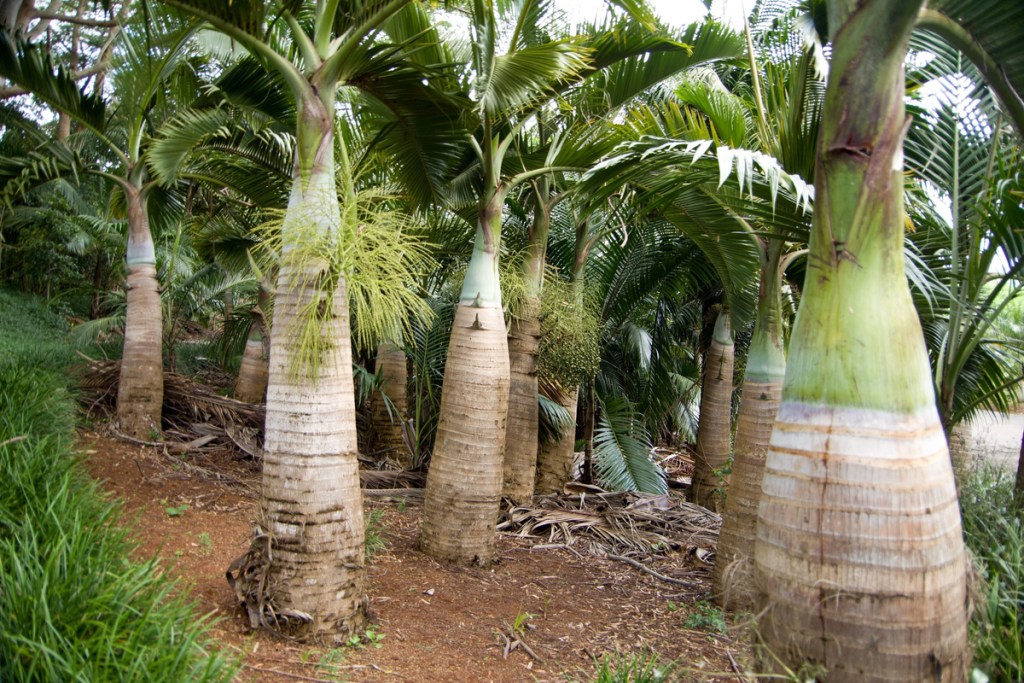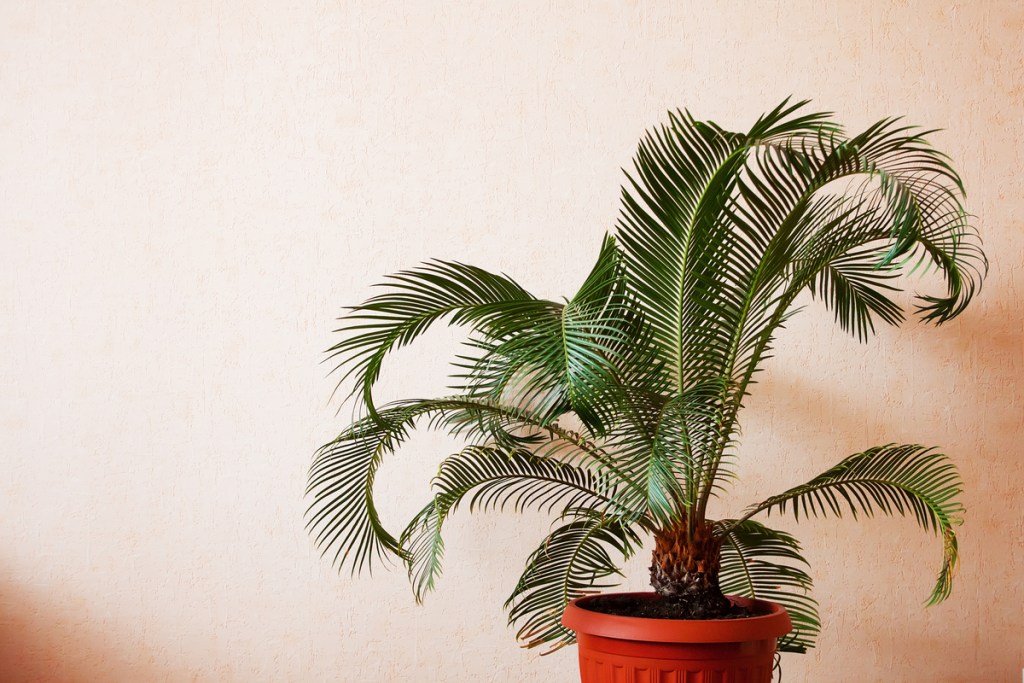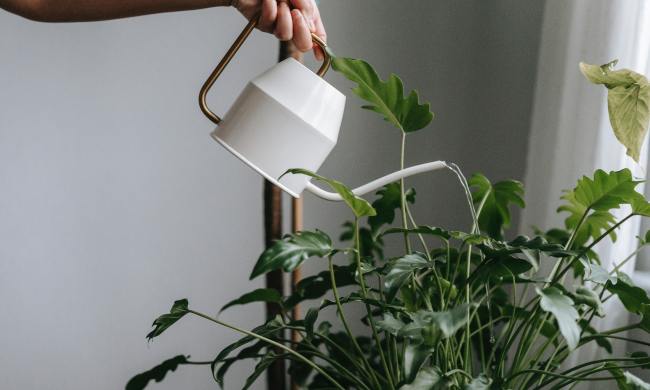Spindle palms are a mid-sized variety in the Arecaceae that’s native to tropical islands in the Indian Ocean. Because of that, they’re much better suited to warmer outdoor climates, like California and Florida. Sporting a mix of beautiful green fronds and a gray trunk, spindle palms are a perfect balance of elegant and tropical.

Why grow a spindle palm tree?
Spindle palm trees are a species of palm that’s much hardier than other members of the same family or even genus (like the bottle palm, for example), which makes it easy to grow indoors or in containers if you don’t have much room for landscaping. You’ll find gardeners in warm and cool climates love growing these for different reasons, not the least of which is their ease of care.
The spindle palm growth rate is slow, so they won’t outgrow their containers easily and they won’t immediately take over your yard. As a landscaping plant, the mix of hardiness and slow growth makes them easy to move if you decide you have a better location for it or if they aren’t doing well in their current spot. Spindle palms are also tolerant of salt and drought (once established), which is why you’ll see them a lot on beachside properties and sandy environments.
Spindle palms do the best in USDA hardiness zone 10, outside of which they’ll do much better as an indoor container plant throughout most of the year. Frost damages the foliage, and exposure to prolonged cold or extreme temperatures can cause it to die.
Good care is rewarded with beautiful flowers (when outdoors)
One of the benefits of growing spindle palms outdoors is that you’ll be rewarded with beautiful cream-colored flower stalks that grow to up to three feet long. The stalks branch and grow just below the crown shaft. Spindles are monoecious plants, meaning that male and female flowers both grow on the same tree. If the flowers are fertilized, they have the potential to grow into orange-red oval fruits.
Unfortunately, growing a spindle palm indoors means that it’s very unlikely to flower and fruit. Spindle palm trees have beautiful foliage either way, so you won’t be losing out with this plant! But if you want to try to encourage flowering and fruiting, you can always look into moving the plant to an outdoor space like a patio or deck for the warmer months.
How fast do spindle palm trees grow?
The growth rate of spindle palm trees is slow, though it can grow to be up to 25 feet tall as an outdoor plant. Indoors, given the space, these palms often stop growing around six feet (so you don’t have to worry about it bursting through your ceilings). In the right conditions, the fronds can grow to be ten feet long with individual two-foot-long leaves.
Container-grown spindle palms, whether indoors or on a patio, will grow even slower than their outdoor counterparts that are planted directly in the ground—and that’s perfectly normal! The same is said for all container plants, no matter the variety.
Their ideal planting location
When growing outdoors, spindle palms should be planted at least four feet away from structures so that their fronds have room to spread out. Keep in mind that at their maximum height (25 feet) the fronds can be up to 10 feet long. So, if you have a particularly tall building and you want to include these trees in the landscape, it’s best to give up to ten feet of space between the tree and the building to accommodate a fully mature spindle palm tree.
If you’re planting multiple palms in a row or in one location, they should be at least six feet apart from each other to make space for all the roots and all the fronds. Unlike a tall building, the fronds of one palm won’t squish the fronds of another, so you don’t have to give them ten feet of space unless you want to.

Caring for your spindle palm tree
Proper care is the key to happy, healthy spindle palm trees, whether you grow them outdoors or in containers. They aren’t too high maintenance, only needing to be fertilized once a season during the spring, summer, and fall; however, spindle palms are known for being prone to potassium deficiencies, so you should make sure to use a fertilizer that’s high in potassium if you start noticing orange specks on older leaves.
Spindle palms trees only need to be pruned or trimmed occasionally, since they grow slow, but make sure to remove any diseased, damaged, or dead foliage as you notice it because they can cause the plant to weaken and become susceptible to infestations or further disease.
Light needs: Full sun when grown outdoors; bright, indirect lighting when grown indoors
Water needs: Regular watering when the top layer of soil starts to dry
Soil needs: Moist, well-draining soil; never let the soil dry out completely
Spindle palm trees are an investment, whether planting on your property or growing indoors in a container. They don’t need a lot of monitoring or care, but they won’t be as happy as possible with neglect, either. Hardy plants are fine when neglect happens accidentally and occasionally, but they still appreciate receiving love and care like any other plant.


